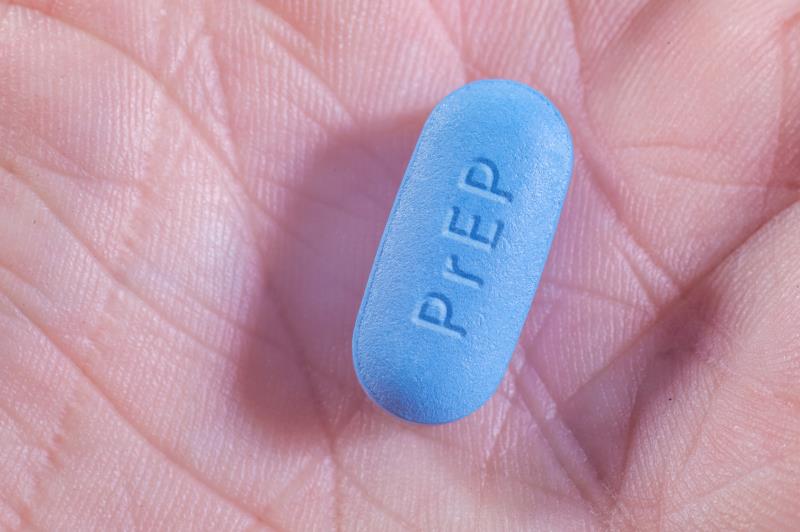Cabotegravir superior to TDF/FTC for HIV prevention





Pre-exposure prophylaxis (PrEP) containing either long-acting injectable cabotegravir (CAB) or tenofovir/emtricitabine (TDF/FTC) is safe and effective for transgender women (TGW) and cisgender men who have sex with men (MSM), but CAB results in a much lower HIV incidence compared to TDF/FTC, results of the HIV Prevention Trials Network (HPTN) 083 have shown.
“CAB and TDF/FTC were both safe and highly effective for PrEP in HPTN 083, with estimated HIV incidence in the CAB arm 66-percent lower than in the TDF/FTC arm,” the researchers said. “CAB is the first injectable agent proven effective for HIV PrEP.”
HPTN 083 is a phase IIb/III randomized multicentre double-blind, double-dummy, clinical trial that assessed the safety and efficacy of long-acting injectable CAB compared to daily oral TDF/FTC for HIV PrEP. Its results were virtually presented at the 23rd International AIDS Conference (AIDS 2020). A companion trial in cisgender women is ongoing.
A total of 4,566 HIV-uninfected MSM and TGW enrolled at 43 sites in Africa, Asia, Latin America, and the US were randomly assigned 1:1 to receive either active CAB + TDF/FTC placebo (oral CAB for 5 weeks, then intramuscular injections every 8 weeks for 148 weeks) or active TDF/FTC + CAB placebo) oral placebo for 5 weeks, then placebo injections on the same schedule.
All participants (median age, 26 years; interquartile range, 22–32 years; 12 percent TGW) were offered daily oral TDF/FTC for 48 weeks after last injection. Participant retention was 91 percent at 6 months, 87 percent at 12 months, and 74 percent at 24 months. [AIDS 2020, abstract OAXLB0101]
Fifty-two incident HIV infections occurred during 6,385 person-years of follow-up, with an overall incidence of 0.81 percent (95 percent confidence interval [CI], 0.61–1.07). HIV infections were much lower (hazard ratio, 0.34, 95 percent CI, 0.18–0.62) in the CAB arm (n=13; incidence, 0.41 percent, 95 percent CI, 0.22–0.69) than in the TDF/FTC arm (n=39; incidence, 1.22 percent, 95 percent, 0.87–1.67).
Blinded study product injections covered 92 percent of person-years. There was high adherence to oral TDF/FTC. Eighty-seven percent of 372 TDF/FTC participants had plasma samples with detectable concentrations, and 75 percent had concentrations consistent with daily dosing.
Both PrEP were well tolerated, and adverse events (AEs) were mostly mild or moderate in severity and balanced between CAB and TDF/FTC arms. The most common AEs in the CAB arm were hypertension, pyrexia, and injection site reaction, while nausea was significantly more frequent in the TDF/FTC arm.
Treatment discontinuation due to injection intolerance occurred in 46 (2.2 percent) active CAB recipients. This correlated with the severity of the intolerance or reaction.
“The HPTN 083 results demonstrating the superiority of CAB to TDF/FTC have the potential to transform the landscape of HIV prevention for cisgender MSM and TGW,” said Raphael J. Landovitz, HPTN 083 protocol chair and co-director of the UCLA Center for Clinical AIDS Research & Education. [https://www.hptn.org/news-and-events/press-releases/hptn-083-study-demonstrates-superiority-cabotegravir-prevention-hiv]
“We know that some people have difficulty with or prefer not to take pills, and an injectable product such as long-acting CAB could be a very important option for them,” he added.
An HIV-1 integrase strand transfer inhibitor, CAB has intrinsic properties that permit its formulation as a long-acting injectable suspension. In clinical evaluation, long-acting CAB has a half-life that permits infrequent dosing, possibly once every 3 months. [Curr Opin HIV AIDS 2015;10:258-63]